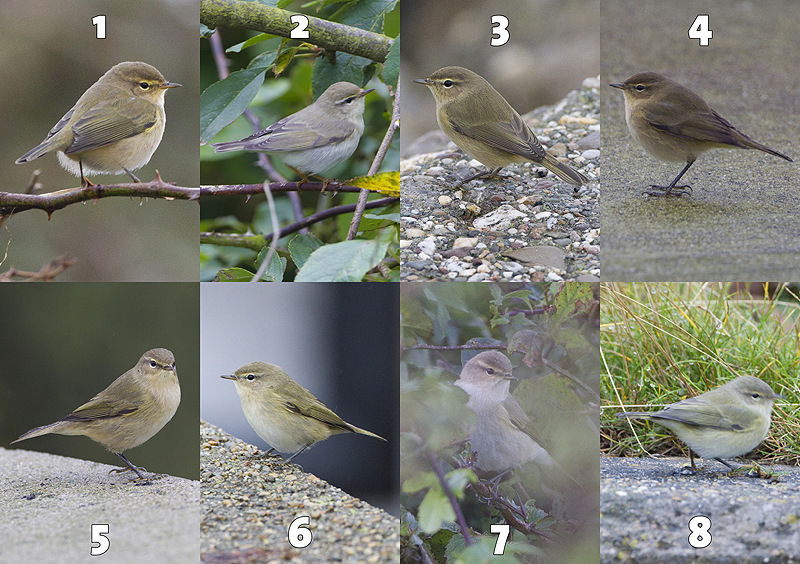Tjiftjaf
Phylloscopus collybita · Common Chiffchaff
 Tjiftjaf ·
Phylloscopus collybita
·
21-10-2012 · René van Rossum
Tjiftjaf ·
Phylloscopus collybita
·
21-10-2012 · René van Rossum
| Datum | 21 oktober 2012 |
|---|---|
| Locatie | Helgoland, Duitsland |
| Fotograaf |
|
| Bekeken | 6542 × |
| Tjiffen kunnen natuurlijk erg variabel zijn, maar aan nr. 2 twijfel ik... Deze nr. 2 heeft wel een opvallende wenkbrauw- en oogstreep en tevens lichte poten. Vogel was niet gelig op de borst en buik, maar meer wit. Er was ook nog een late Fitis aanwezig op de 20 okt. Nr. 4 was zeer donker vergeleken de 100-en aanwezige andere Tjiffen ! Nr. 7 en 8 zijn Sib. Tjiffen (ook horen roepen). Foto's zijn gemaakt in de motregen met een hoge asa. Wie kan er meer zeggen over nr. 2... |
Discussie
Frank van der Meer
·
23 oktober 2012 17:33, gewijzigd 23 oktober 2012 17:34
Arnold Meijer
·
23 oktober 2012 19:03
Arnold Meijer
·
23 oktober 2012 21:03
Frank van der Meer
·
24 oktober 2012 21:08, gewijzigd 24 oktober 2012 21:08
Maarten Wielstra
·
24 oktober 2012 21:46
George Sangster
·
26 juli 2025 14:56
Marova, IM, Illyna, IY, Shipilina, DA & Ivanitskii, VV 2025. Geographical variation in chiffchaff song: across three subspecies and two secondary contact zones. J. Zool. in press. https://doi.org/10.1111/jzo.70045
In many bird species, such as the Common Chiffchaff Phylloscopus collybita, the geographic variation in song is a crucial factor in determining intraspecies diversity. However, capturing this variation in trans-Palearctic species can be challenging due to their wide ranges. We present an almost continent-wide study spanning from Germany to Yakutia, covering Western European, Eastern European, and Siberian chiffchaff subspecies, and including a broad zone of hybridization between the latter. The novel fine-scale differentiation patterns are revealed through a detailed analysis of local repertoire variability, including the diversity and geographic distribution of syllables, coupled with quantitative measures of rhythmic structure, frequency, and temporal song characteristics. Our study shows pronounced geographic variation across the entire chiffchaff range, with a distinct eastward trend characterized by an increase in singing speed and vocal repertoire size, a decrease in both the maximum and minimum frequencies, and a higher proportion of syllables with ascending modulation.
Gebruikers van het forum gaan akkoord met de forumregels.
